By Barbara Baird, Women’s Outdoor News
The main selling point for adding a suppressor to your gun is its ability to reduce the level of noise coming from a gun after it’s fired. I wondered what a suppressor does to the level of flash (light) coming from the end of a gun, so I took a couple of guns out to the range at night to see how a suppressor reduces flash, too. Let’s just say it’s significant.
The Set-up With SilencerCo Suppressors
SilencerCo, the #1 manufacturer of silencers in the US, is a partner with The WON, so it’s only natural that I’d use their suppressors and have them at fingertip’s ease to acquire. I chose the Sparrow 22 and the Saker ASR for this experiment.
I chose to suppress a pistol and a rifle, and I wanted a rifle with a flash hider, as well. I shot the pistol, a Volquartsen Scorpion in .22 caliber, first without the silencer attached, and then, with the Sparrow 22. In fact, I removed its compensator for the bare muzzle shot. You can see the results below.
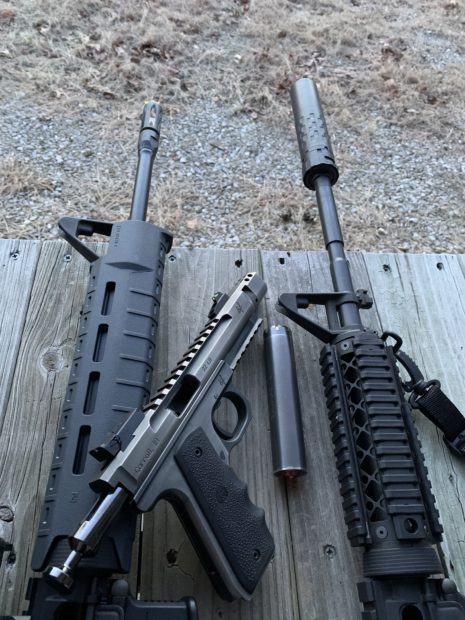
Jason Baird photo
For the rifle, I used 2 different ARs with similar barrel lengths. My suppressed AR uses SilencerCo’s ASR system, and the ASR muzzle device is not easy to remove when it is properly installed. Therefore, I needed another AR for the unsuppressed shots. I used my Palmetto State Armory (PSA) .223 AR with a Saker ASR suppressor attached for the suppressed shots, and a Smith & Wesson M&P-15 for the bare muzzle shots.
Check out the results of shooting the .223 rifles with no suppressor and the Saker ASR silencer.
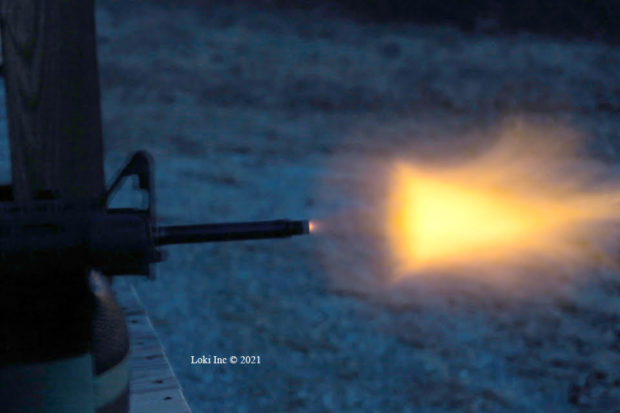
M&P AR-15 with no muzzle device – Jason Baird photo
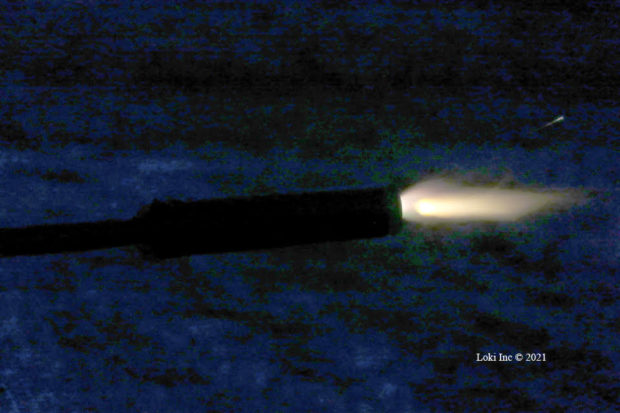
PSA AR-15 with Saker suppressor – Jason Baird photo
How A Suppressor Reduces Flash
First, let’s explain what happens when you fire a shot. After the primer ignites a cartridge’s powder charge, high-pressure hot gas propels the bullet down the barrel. When the bullet and any associated hot, turbulent gas leave the muzzle, or uncorks, it enters an airspace that is colder and has lower pressure than in the barrel. The gas sprays out of the muzzle after the bullet uncorks. That hot gas cloud begins to expand. In some cases, depending on the length of the barrel, there might be some unburned powder in the mix and when it enters the air, it begins to burn.
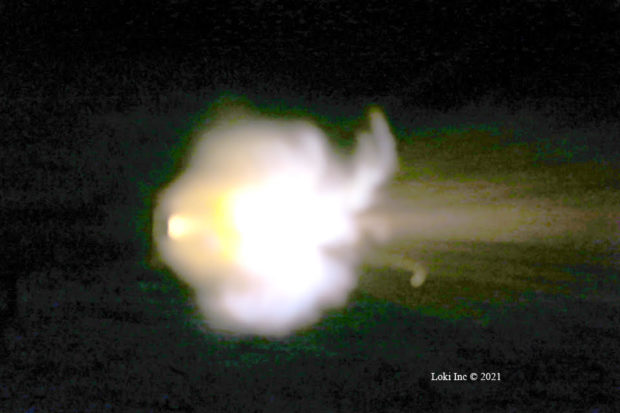
Volquartsen Scorpion no compensator – Jason Baird photo
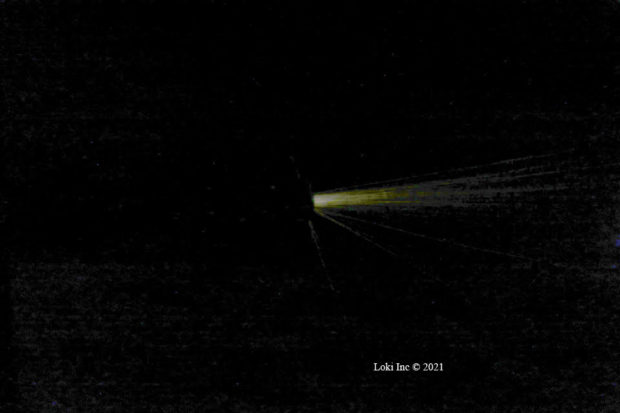
Volquartsen Scorpion in .22 long rifle with the Sparrow 22
In a short-barreled gun, like a pistol, when the ammunition cartridge design is not quite set up for the length of barrel, there might be quite a bit of unburned powder exiting the muzzle. If you are shooting a long-barreled gun, you may see a lot less than that, because the powder has more time to burn completely and the gas has cooled down more. The chance of having unburned powder is far less in a longer barreled gun.
All of that turbulence happening at the end of the barrel produces noise, and some of the gas is hot enough to glow.
What Does A Suppressor Do?
By design, a suppressor is supposed to reduce the amount of noise. One of the major ways it does this task, is by containing the “uncorked” gas, and introducing additional turbulence to that gas cloud through the use of the suppressor’s baffles so that the hot gas stays confined longer and cools down more before the bullet comes out of the end of the suppressor. It not only cools the gas by making it more turbulent and through heat transfer into the suppressor materials, but also it reduces the amount of air available for after-burning. Some suppressors also attempt to cancel the noise through destructive interference.
Note: That’s part of the reason that the first shot through a suppressor is usually the loudest. The cooler, denser air in the suppressor during the first shot interferes a bit with the way the guts of the suppressor introduce turbulence and destructive noise interference.
Even though a suppressor is designed primarily to cut down on noise, during noise reduction the suppressor reduces the temperature and energy of the cloud of gas that’s exiting. After that happens, you’re not likely to see as much burning gas or gas that’s hot enough to glow once it escapes from the open end of the suppressor.
Testing Results
On the night of the testing, the temperature measured 40 degrees, with a slight north wind, making it feel even colder. We captured the photos with my digital camera, set on a four-second exposure per shot. By the end of the session, I couldn’t feel my fingers any longer, but felt the time spent on the cold range with hot muzzles made up for the misery. I learned a lot and hopefully, you’ll also realize what’s happening with muzzle flash.
It’s obvious why law enforcement, military and special operators use suppressors for nighttime use. Suppressors significantly cut down on muzzle flash and allow a shooter to see better. This is why having a suppressor on your home-defense AR makes perfect sense.
Visit SilencerCo to see the line of fine silencers and how to purchase one for your use.
Barbara Baird publishes Women’s Outdoor News, an online publication, and writes for several firearms, travel and outdoor publications.


